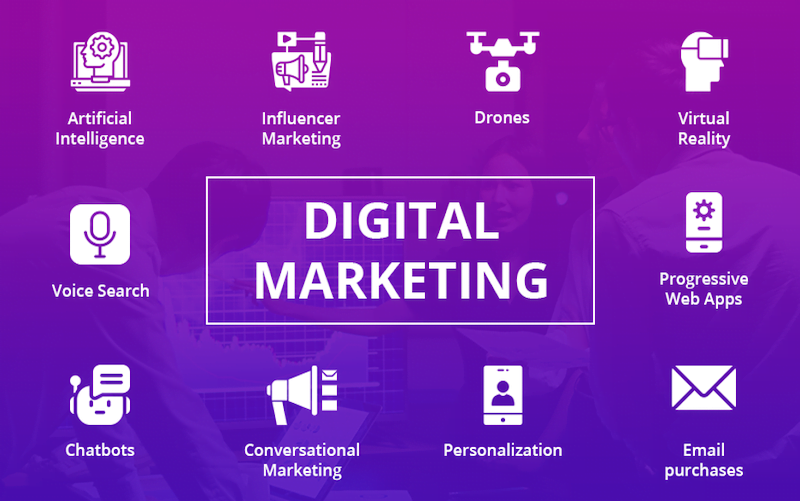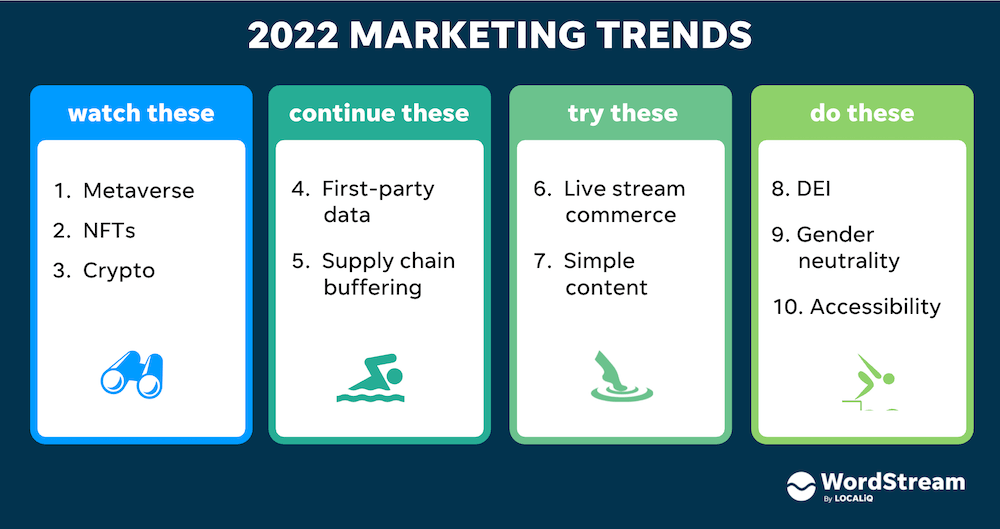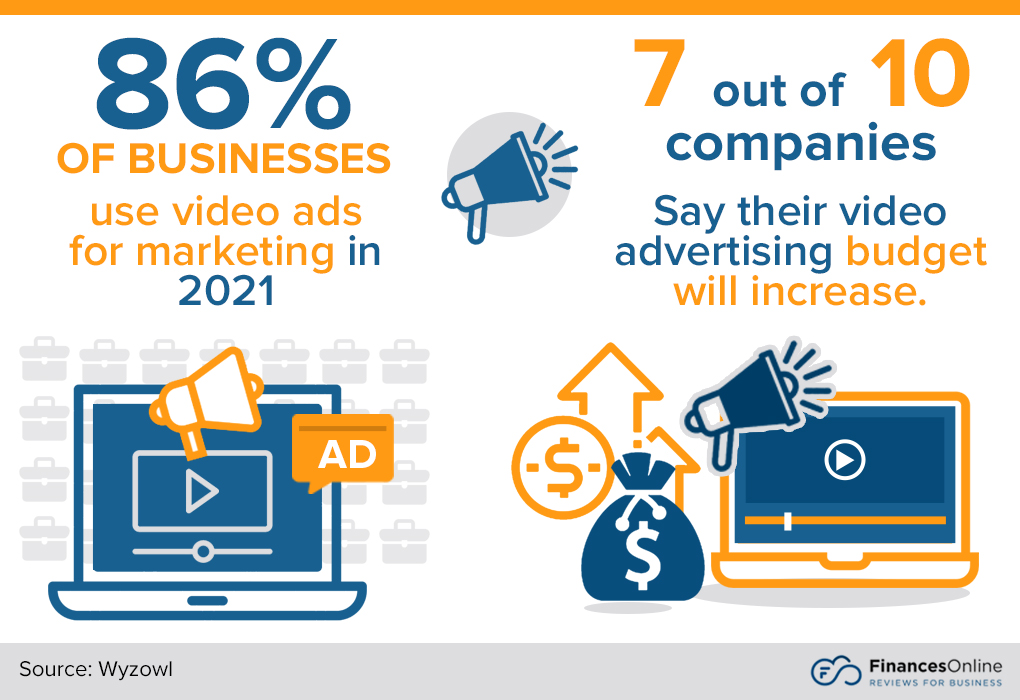
Imagine scrolling through your social media feed and coming across an ad that instantly grabs your attention. It’s not just the catchy jingle or the vibrant visuals that captivate you, but rather, it’s the innovative way in which the product is being marketed. As we navigate through the ever-evolving world of advertising, it’s crucial to stay up to date with the latest trends that are reshaping the industry. From immersive virtual reality experiences to personalized influencer collaborations, this article explores the exciting breakthroughs and strategies that are revolutionizing the way we advertise.

1. Artificial Intelligence (AI) in Advertising
Artificial Intelligence (AI) has revolutionized the advertising industry, bringing in new possibilities and transforming how advertisers create content, target customers, and engage with them. Let’s explore some of the key trends in AI-powered advertising.
1.1 AI-powered content creation
Creating engaging and personalized content has always been a challenge for advertisers. With AI-powered content creation, advertisers can now leverage machine learning algorithms to generate compelling ads and campaigns. AI analyzes large amounts of data to understand consumer preferences, trends, and behavior, enabling advertisers to create highly targeted and relevant content.
AI-powered tools can automatically generate catchy headlines, optimize images, and even write ad copy based on consumer insights. This not only saves time and resources but also ensures that the content resonates with the target audience, increasing the chances of conversion.
1.2 AI-driven customer targeting
Gone are the days when advertisers relied solely on demographics for targeting customers. AI-driven customer targeting helps advertisers identify and reach their target audience more effectively. By analyzing vast amounts of data, AI algorithms can uncover patterns and trends in consumer behavior, allowing advertisers to create highly targeted and personalized ads.
With AI, advertisers can segment their audience based on their interests, preferences, and online behavior. This enables them to deliver ads that are more relevant and engaging, leading to improved conversion rates. AI algorithms continuously learn and adapt based on customer responses, ensuring that targeting remains precise and effective over time.
1.3 AI chatbots in customer engagement
AI-powered chatbots have quickly become an integral part of customer engagement strategies. These intelligent virtual assistants can interact with customers in real-time, providing instant support and personalized recommendations. Chatbots can analyze customer inquiries, understand their needs, and respond with relevant information and assistance.
AI chatbots offer a seamless and efficient customer experience, reducing response times and increasing customer satisfaction. These chatbots can also collect valuable customer data, including preferences and purchase history, which can be used for further personalized advertising campaigns.
2. Personalized Advertising
Personalized advertising has become a significant trend in the industry, as advertisers recognize the importance of tailoring their messages to individual consumers. Let’s explore some of the key trends in personalized advertising.
2.1 Data-driven insights for personalized ads
Data is at the core of personalized advertising, as it enables advertisers to understand their customers better and create highly targeted campaigns. By leveraging data analytics and AI algorithms, advertisers can gain valuable insights into consumer behavior, preferences, and interests.
With these insights, advertisers can create personalized ads that resonate with individual consumers. Whether it’s recommending products based on their purchase history or displaying ads related to their recent online searches, personalized advertising ensures that customers receive relevant and compelling messages.
2.2 Dynamic creative optimization
Dynamic creative optimization allows advertisers to deliver personalized and contextually relevant ads at scale. Advertisers can create multiple versions of an ad, each tailored to a specific audience segment or individual, and AI algorithms can dynamically select and optimize the best-performing version for each user.
By utilizing dynamic creative optimization, advertisers can deliver ads that are highly relevant, increasing engagement and conversion rates. This approach also enables advertisers to adapt their messaging quickly based on real-time data and consumer preferences.
2.3 Hyper-targeting based on user behavior
Hyper-targeting takes personalized advertising to the next level by focusing on individual user behavior. By tracking and analyzing user behavior across various touchpoints, such as websites, apps, and social media, advertisers can gain insights into their interests, preferences, and intent.
With hyper-targeting, advertisers can deliver highly relevant ads to users based on their specific behaviors, such as browsing history, previous interactions with ads, or even physical location. This level of personalization helps advertisers maximize the impact of their campaigns and increase the likelihood of conversion.
3. Influencer Marketing
Influencer marketing continues to gain momentum as a powerful strategy for brand promotion and customer engagement. Let’s explore some of the key trends in influencer marketing.
3.1 Rise of micro-influencers
While celebrity influencers still play a significant role in influencer marketing, there has been a shift towards micro-influencers in recent years. Micro-influencers are individuals with a smaller but highly engaged following, typically in a specific niche or industry.
These micro-influencers often have a more genuine connection with their audience, resulting in higher levels of trust and engagement. Advertisers are increasingly partnering with micro-influencers to leverage their influence and reach targeted audiences effectively.
3.2 Authenticity and transparency
Authenticity and transparency are becoming crucial factors in influencer marketing. Consumers are increasingly aware of sponsored content and are wary of inauthentic endorsements. As a result, advertisers and influencers are focusing on cultivating genuine relationships and promoting transparency in their collaborations.
Brands are seeking partnerships with influencers who align with their values and resonate with their target audience. This approach ensures that the influencer’s endorsement feels organic and authentic, ultimately leading to more meaningful connections with consumers.
3.3 Long-term partnerships with influencers
Rather than one-off collaborations, advertisers are increasingly forming long-term partnerships with influencers. Long-term partnerships allow influencers to develop a deeper understanding of the brand and its values, resulting in more authentic and impactful campaigns.
These partnerships also enable advertisers to build a consistent and recognizable brand image through the influencer’s content. By working closely with influencers over an extended period, advertisers can establish a loyal and engaged community around their brand.
4. Video Advertising
Video advertising has emerged as a dominant force in the advertising landscape, capturing the attention of consumers across various platforms. Let’s explore some of the key trends in video advertising.
4.1 Short-form videos for social media
Short-form videos, such as those found on platforms like TikTok and Instagram Reels, have gained immense popularity in recent years. Advertisers are leveraging these platforms to create engaging and entertaining video content that resonates with the younger demographic.
By embracing short-form videos, advertisers can capture the attention of users with concise and visually appealing content. These videos are often highly shareable, allowing advertisers to increase their reach and brand exposure.
4.2 User-generated content (UGC) videos
User-generated content (UGC) has become a powerful tool in video advertising. Advertisers are encouraging consumers to create and share videos featuring their products or advocating for their brand. UGC videos offer a level of authenticity and trust that traditional ads may lack.
By showcasing UGC videos in their marketing campaigns, advertisers tap into the creativity and enthusiasm of their customers. This approach not only helps build brand loyalty but also increases engagement and social proof.
4.3 Live streaming and interactive videos
Live streaming and interactive videos provide advertisers with an opportunity to engage with their audience in real-time. Platforms like Facebook Live, Instagram Live, and YouTube Live enable advertisers to host live events, product demonstrations, or Q&A sessions.
Interactive videos, on the other hand, allow viewers to engage with the content by making choices or interacting with the video elements. This level of interactivity creates a more immersive and engaging experience, capturing the attention of viewers and increasing their likelihood of taking action.

5. Native Advertising
Native advertising seamlessly integrates promotional content into the user experience, offering a less intrusive approach to advertising. Let’s explore some of the key trends in native advertising.
5.1 Blending with user experience
Native advertising aims to deliver ads that blend seamlessly with the surrounding content, providing a more natural and non-disruptive experience for users. Advertisers are integrating their promotional messages into articles, social media feeds, or search engine results, making them appear as organic content.
By matching the form and function of the platform on which they are placed, native ads significantly enhance user experience while still delivering the intended marketing message.
5.2 Sponsored content in podcasts
Podcasts have gained immense popularity in recent years, attracting a dedicated and engaged audience. Advertisers are now leveraging this medium by sponsoring podcasts or creating branded content that aligns with the podcast’s theme.
Sponsored podcast content feels more personal and authentic, creating a strong connection between the brand and the listeners. This form of native advertising allows advertisers to reach a highly targeted audience in a contextually relevant and non-intrusive manner.
5.3 Influencer collaborations for seamless integration
Collaborating with influencers is an effective way to incorporate native advertising into the user experience. Instead of creating traditional ads, advertisers partner with influencers to integrate their brand seamlessly into the influencer’s content.
By leveraging the influencer’s storytelling abilities and their relationship with their audience, advertisers can create genuine and organic sponsored content. This approach ensures that the advertising message is delivered in a way that feels native and resonates with the influencer’s followers.
6. Voice Search Ads
With the rise of voice assistants like Amazon Alexa and Google Assistant, voice search has become an essential part of everyday life. Let’s explore some of the key trends in voice search ads.
6.1 Optimizing ads for voice assistants
As consumers increasingly use voice search to find information and make purchase decisions, advertisers need to optimize their ads for this medium. Voice search ads should be tailored to conversational queries and provide concise and accurate responses.
By understanding the unique characteristics of voice search, advertisers can ensure that their ads are relevant and compelling when delivered through voice assistants.
6.2 Conversational and personalized ad copy
Voice search ads require a conversational and personalized approach to resonate with users. Advertisers need to create ad copy that mirrors natural language and addresses specific user needs or queries.
By leveraging AI algorithms and customer data, advertisers can deliver voice search ads that are highly tailored and personalized. This approach increases the chances of capturing the attention of users and driving them towards conversion.
6.3 Leveraging voice-activated devices
With the increasing popularity of voice-activated devices like smart speakers, advertisers have an opportunity to reach consumers in their homes. Advertisers can create voice-activated ads that provide helpful information, entertainment, or promotional offers.
By integrating their brand into everyday tasks or activities, advertisers can establish a presence in consumers’ lives and build brand loyalty. Voice-activated devices offer a unique and immersive advertising channel that can complement other marketing efforts.

7. Augmented Reality (AR) Advertising
Augmented Reality (AR) provides advertisers with innovative ways to engage with their target audience. Let’s explore some of the key trends in AR advertising.
7.1 Interactive AR ads in social media
AR technology has found its way into social media platforms, allowing advertisers to create interactive and immersive ad experiences. Advertisers can leverage AR filters, lenses, or effects to engage users and showcase their products or services.
By encouraging users to interact with AR ads, advertisers can create memorable and shareable experiences, increasing brand awareness and engagement.
7.2 Virtual product trials and try-ons
AR advertising offers the opportunity to provide virtual product trials and try-ons, allowing consumers to visualize products before purchasing. By overlaying digital content onto the real world through AR, advertisers can demonstrate how their products will look or perform in a user’s environment.
Virtual product trials and try-ons enhance the shopping experience, reducing uncertainty and increasing confidence in purchasing decisions.
7.3 AR gamification for brand engagement
Gamification has become increasingly popular in advertising, and AR technology takes it to the next level. Advertisers can develop AR games or gamified experiences that provide entertainment while promoting their brand or products.
By incorporating elements like rewards, challenges, or competitions, advertisers can increase user engagement and foster a deeper connection with their target audience. AR gamification adds an element of fun and interactivity that captivates users and encourages them to interact with the brand.
8. Social Media Advertising
Social media has become an integral part of advertising strategies, offering a vast audience and a range of targeting options. Let’s explore some of the key trends in social media advertising.
8.1 Influencer partnerships on social platforms
As mentioned earlier, influencer marketing has gained immense popularity. Social media platforms provide the perfect stage for influencers to showcase their collaborations with brands, reaching a wide and engaged audience.
By partnering with influencers on social media, advertisers can leverage their influence and authenticity to promote their products or services. This approach helps advertisers tap into the influencer’s loyal following and build brand awareness and trust.
8.2 Stories and ephemeral content
Stories and ephemeral content, popularized by platforms like Instagram and Snapchat, have become a significant trend in social media advertising. These temporary and visually engaging posts allow advertisers to create time-sensitive and authentic content that engages users for a short period.
By leveraging features like polls, quizzes, or swipe-up links, advertisers can enhance user engagement and encourage interaction with their brand.
8.3 Social commerce and shoppable posts
Social media platforms are increasingly integrating commerce capabilities, allowing advertisers to create shoppable posts and drive direct sales. Advertisers can tag products in their posts, providing a seamless shopping experience for users.
By enabling users to make purchases without leaving the platform, social commerce significantly reduces friction in the customer journey, leading to increased conversion rates. Advertisers can leverage social media as a sales channel and capitalize on the growing trend of online shopping.

9. Programmatic Advertising
Programmatic advertising has revolutionized the way ad inventory is bought and sold, offering a more efficient and data-driven approach. Let’s explore some of the key trends in programmatic advertising.
9.1 Real-time bidding and automation
Real-time bidding (RTB) allows advertisers to bid for ad impressions in real-time, enabling them to target specific audiences and optimize their campaigns based on real-time data. RTB automates the process of buying and selling ad inventory, improving efficiency and ensuring optimal ad placement.
By leveraging RTB and automation, advertisers can reach their target audience at the right time and place, maximizing the impact of their campaigns.
9.2 AI-powered ad buying and targeting
AI has become an integral part of programmatic advertising, powering algorithms that optimize ad buying and targeting. AI algorithms analyze vast amounts of data to identify patterns and trends, enabling advertisers to deliver ads that are highly targeted and relevant.
With AI, advertisers can optimize their programmatic campaigns in real-time, adjusting bidding strategies and targeting parameters based on performance. AI-powered ad buying and targeting increase efficiency and effectiveness, ensuring that advertisers reach the right audience with the right message.
9.3 Enhanced ad campaign optimization
Programmatic advertising enables advertisers to measure and analyze campaign performance in real-time, providing valuable insights into audience behavior, ad effectiveness, and conversion rates. This data-driven approach allows advertisers to continuously optimize their campaigns for better results.
By analyzing performance metrics such as click-through rates, conversion rates, and cost per acquisition, advertisers can identify areas for improvement and make data-driven decisions to enhance their ad campaigns.
10. Mobile Advertising
With the ubiquitous presence of smartphones, mobile advertising has become an essential part of advertising strategies. Let’s explore some of the key trends in mobile advertising.
10.1 Mobile-first and responsive ad formats
As mobile usage continues to grow, advertisers are prioritizing mobile-first ad formats to ensure optimal user experience. Mobile-first ad formats are specifically designed for smaller screens and touch interactions, delivering content that is visually compelling and easy to navigate.
Responsive ad formats adapt to different screen sizes and device orientations, ensuring that the ads look and function seamlessly across a range of mobile devices. Advertisers are embracing these formats to maximize engagement and conversion rates on mobile platforms.
10.2 Location-based targeting
Location-based targeting allows advertisers to deliver ads to users based on their physical location or proximity to specific points of interest. Advertisers can leverage GPS data from mobile devices to target users in a specific area, offering highly relevant and localized ads.
By delivering ads that are specific to a user’s location, advertisers can increase the chances of capturing their attention and driving them towards conversion. Location-based targeting is particularly effective for driving foot traffic to physical stores or promoting local events.
10.3 Mobile app advertising
Mobile apps offer a unique advertising opportunity, as they provide a dedicated and engaged audience. Advertisers can leverage in-app ads to reach users while they are actively engaged with a specific app.
By offering interactive and visually appealing ad formats within mobile apps, advertisers can capture the attention of users and create memorable brand experiences. Mobile app advertising allows advertisers to target specific user segments based on their app preferences and behaviors, maximizing the impact of their campaigns.
In conclusion, the advertising landscape is continually evolving, with new technologies and trends emerging to enhance targeting, engagement, and personalization. From AI-powered content creation to mobile app advertising, advertisers have a wide range of tools and strategies at their disposal. By embracing these latest trends in advertising, businesses can stay ahead of the competition and connect with their target audience in more meaningful and impactful ways.






